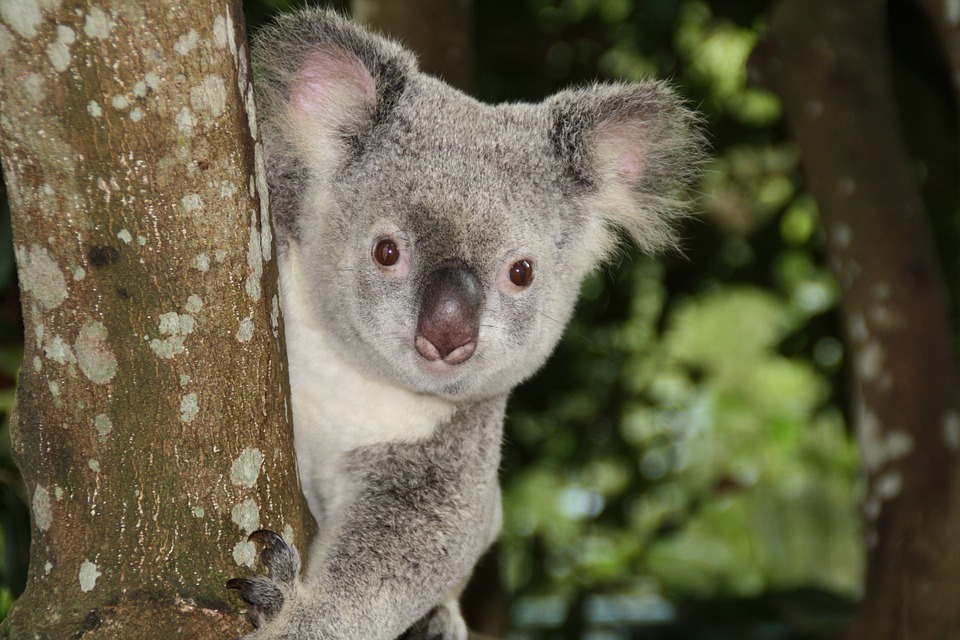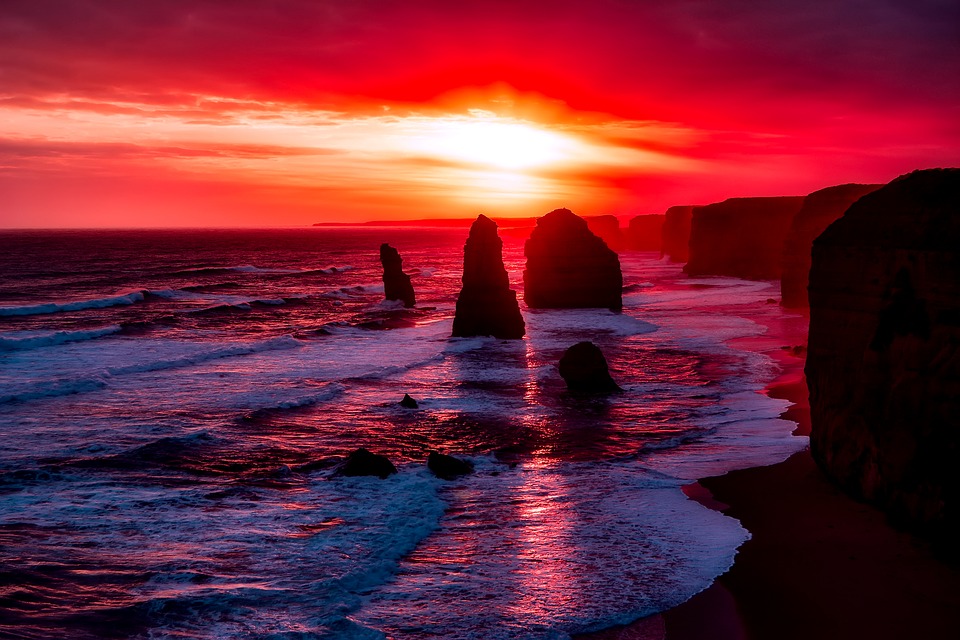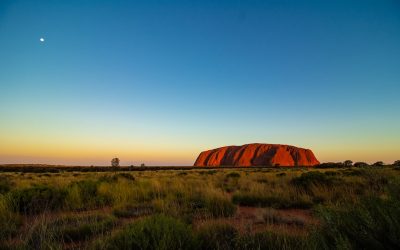Australia
(Commonwealth of Australia)







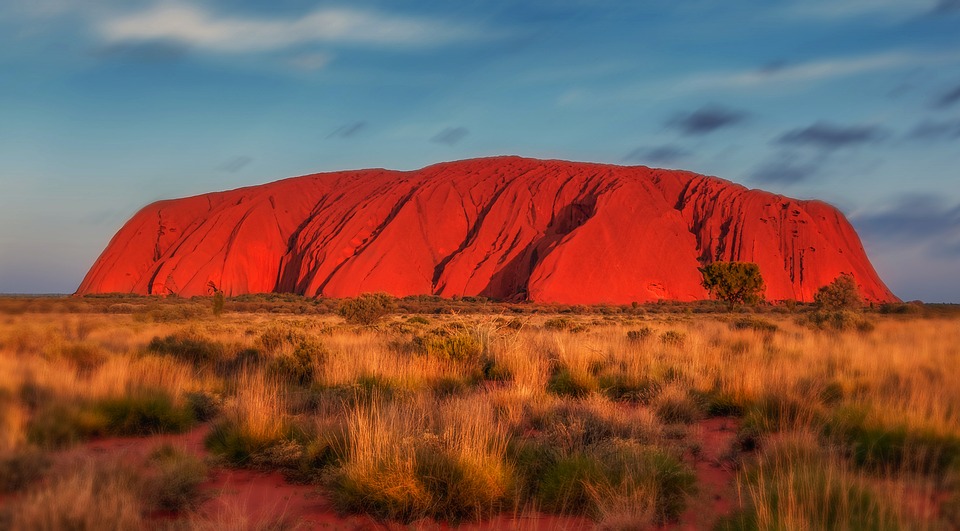
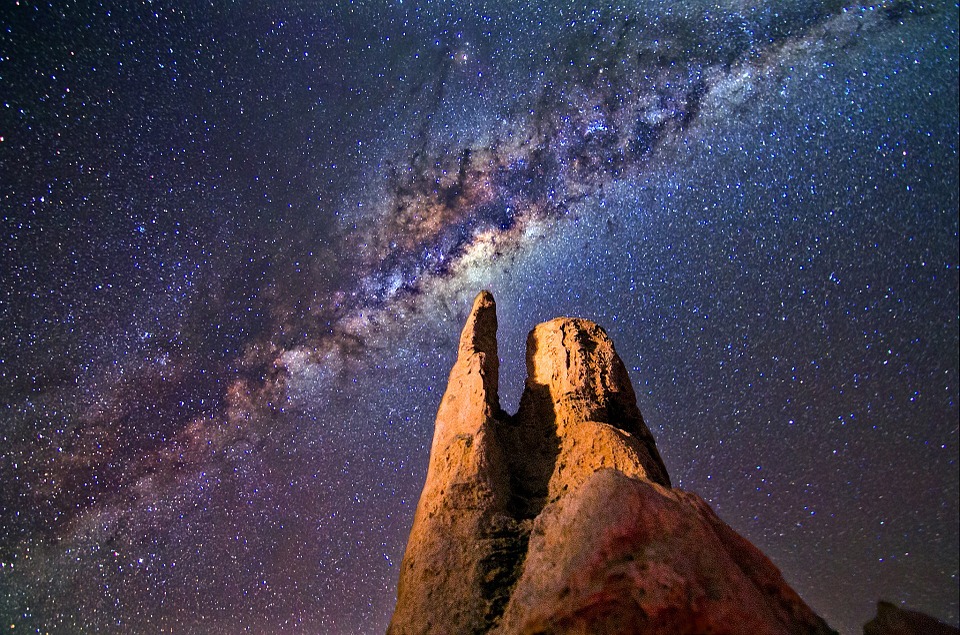
Capital: Canberra
Population (Estimated July 2017): 23,232,413
Area: 7,702,501km2 or 2,973,952mi2
Currency: Australian Dollar ($A)
Official Language: English
Political Information: Federal Parliamentary State
Official Religion: No Official Religion (approximately 27.4% of the population are Protestant, 25.8% are Roman Catholic, 10.6% have other Christian beliefs, 2.1% are Buddhist, 1.7% are Muslim, 13.7% have unspecified or other religious beliefs and 18.7% have no religious beliefs)
Highest Mountain: Mount Kosciuszko at 2,229m or 7,313ft
GDP Official Exchange Rate (OER is more precise at gauging a countries economic power)
(Estimated 2017): $1.39 trillion (US$) or £1.04 trillion (GBP)
GDP (OER) Per Capita (per member of the population estimated 2017): $49,755 (US$) or £37,279(GBP)
GDP Purchasing Power Parity (PPP is good for gauging living conditions and use of resources but not as accurate as OER. This data has been calculated based on the sum value of all goods and services produced in the country valued at prices prevailing in the United States)
(Estimated 2017): $1.235 trillion (US$) or £930 billion (GBP)
GDP (PPP) Per Capita (per member of the population estimated 2017): $49,000 (US$) or £36,710 (GBP)
Time Zone (GMT/UTC): +10:00
Counties/Provinces/States: Australian Capital Territory, New South Wales, Northern Territory, Queensland, South Australia, Tasmania, Victoria, Western Australia
Dependencies: Ashmore and Cartier Islands, Christmas Island, Cocos (Keeling) Islands, Coral Sea Islands, Heard Island and McDonald Islands, Macquarie Island, Norfolk Island
Leaders: Queen of Australia ELIZABETH II (since 6 February 1952); represented by Governor Gen. Sir Peter COSGROVE (since 28 March 2014); Prime Minister Malcolm TURNBULL (since 15 September 2015)
Sources: CIA World Fact Book, Encyclopaedia Britannica,
Australia, officially known as the Commonwealth of Australia, is a country located in the southern hemisphere. It is the world’s sixth-largest country by total area and has a population of over 25 million people. Australia is known for its stunning landscapes, unique wildlife, and vibrant cities. It is often referred to as “The Land Down Under” due to its location in the southern hemisphere.
Australia’s Geography and Climate: A Diverse and Varied Landscape
Australia is a country of diverse geography, with a wide range of landscapes that include mountains, deserts, and beautiful beaches. The Great Dividing Range runs along the eastern coast of Australia, stretching from Queensland to Victoria. This mountain range is home to some of Australia’s most stunning national parks and offers breathtaking views.
In addition to mountains, Australia is also home to vast deserts such as the Simpson Desert and the Great Victoria Desert. These arid regions are characterized by their red sand dunes and sparse vegetation. The Australian Outback, which covers a large portion of the country’s interior, is also known for its unique and rugged beauty.
Australia’s climate varies greatly across the country. The northern regions experience a tropical climate with hot and humid summers, while the southern regions have a more temperate climate with mild summers and cool winters. The central regions of Australia are characterized by extreme temperatures, with scorching hot summers and freezing cold winters.
Australia’s History: From Indigenous Culture to Modern Society
Australia has a rich indigenous culture that dates back thousands of years. The Aboriginal and Torres Strait Islander peoples are the original inhabitants of the land and have a deep connection to the country’s natural environment. They have a rich oral tradition and their art, music, and dance form an integral part of their culture.
Australia was colonized by the British in 1788 when Captain Arthur Phillip arrived with the First Fleet. The British established a penal colony in Sydney, which later grew into a thriving settlement. Over the years, more settlers arrived from Europe, Asia, and other parts of the world, contributing to the multicultural society that exists in Australia today.
Australia gained independence from Britain in 1901 and became a federation of states. Since then, it has developed into a modern and prosperous society with a strong economy and high standard of living. The country is known for its commitment to democracy, human rights, and social equality.
Australian Culture: Art, Music, and Literature
Australia has a vibrant cultural scene that encompasses art, music, and literature. Australian artists have made significant contributions to the world of art, with their unique perspectives and styles. The country is home to many renowned art galleries and museums that showcase both traditional and contemporary Australian art.
In the field of music, Australia has produced many talented musicians who have achieved international success. From rock bands like AC/DC and INXS to pop stars like Kylie Minogue and Sia, Australian musicians have made their mark on the global music industry. The country also hosts several music festivals throughout the year, attracting both local and international artists.
Australian literature is also highly regarded, with many notable writers producing works that reflect the country’s diverse culture and history. Authors such as Patrick White, Peter Carey, and Tim Winton have won prestigious literary awards for their novels and plays. Australian literature often explores themes of identity, belonging, and the relationship between humans and the natural environment.
Australian Wildlife: A Unique and Fascinating Ecosystem
Australia is home to a unique ecosystem that is unlike any other in the world. Due to its isolation from other continents for millions of years, Australia has developed its own distinct flora and fauna. The country is known for its diverse range of wildlife, including iconic animals such as kangaroos, koalas, and wombats.
One of the most famous Australian animals is the kangaroo, which is a symbol of the country. Kangaroos are marsupials that are found in various parts of Australia and are known for their powerful hind legs and ability to hop. They are a common sight in the Australian Outback and can be seen grazing in open grasslands.
Koalas are another beloved Australian animal, known for their cuddly appearance and love for eucalyptus leaves. These marsupials spend most of their time sleeping in trees and are native to the eastern and southern regions of Australia. Wombats, on the other hand, are burrowing mammals that are found in the southern regions of the country. They have a stocky build and are known for their strong digging abilities.
Australian Food and Drink: A Culinary Adventure
Australia’s culinary scene is diverse and reflects the country’s multicultural heritage. The cuisine is influenced by British, European, Asian, and Indigenous Australian flavours, resulting in a unique fusion of tastes and ingredients. Australian cuisine is known for its fresh seafood, grilled meats, and unique desserts.
One iconic Australian dish is the meat pie, which is a savoury pie filled with minced meat and gravy. It is often enjoyed with tomato sauce and is a popular choice for a quick and satisfying meal. Another popular dish is the barbecued sausage, commonly known as a “sausage sizzle.” This simple yet delicious meal consists of a grilled sausage served in a slice of bread with onions and sauce.
When it comes to drinks, Australia is famous for its wine production. The country has several wine regions that produce world-class wines, including Shiraz, Chardonnay, and Cabernet Sauvignon. Beer is also a popular choice among Australians, with many local breweries producing craft beers that showcase unique flavours and styles.
Australian Sports: From Cricket to Rugby to Aussie Rules Football
Australia has a strong sports culture and is known for its passion for various sports. Cricket is one of the most popular sports in the country, with the national cricket team, known as the Australian cricket team, being one of the most successful in the world. The sport is played at both professional and amateur levels, with matches attracting large crowds.
Rugby is another popular sport in Australia, with both rugby union and rugby league being played across the country. The national rugby union team, known as the Wallabies, has a strong following and competes in international tournaments such as the Rugby World Cup. Rugby league is also widely followed, with the National Rugby League (NRL) being the premier domestic competition.
Aussie Rules football, also known as Australian Rules football or simply “footy,” is a uniquely Australian sport that originated in the 19th century. It is a fast-paced and physical game that combines elements of soccer, rugby, and Gaelic football. The Australian Football League (AFL) is the highest level of competition for Aussie Rules football and attracts large crowds to matches.
Australian Cities: Urban Life in Sydney, Melbourne, and More
Australia’s major cities offer a vibrant urban lifestyle with a range of attractions and landmarks to explore. Sydney, the largest city in Australia, is known for its iconic landmarks such as the Sydney Opera House and Sydney Harbour Bridge. The city also boasts beautiful beaches, including Bondi Beach and Manly Beach, where locals and tourists can enjoy swimming and surfing.
Melbourne, the second-largest city in Australia, is renowned for its cultural scene and diverse culinary offerings. The city is home to numerous art galleries, museums, and theatres that showcase both local and international talent. Melbourne’s laneways are also famous for their street art and hidden bars and cafes.
Brisbane, the capital of Queensland, offers a more relaxed and laid-back lifestyle. The city is known for its warm climate and outdoor activities, with the Brisbane River providing opportunities for boating and kayaking. Brisbane is also a gateway to the Gold Coast and Sunshine Coast, which are popular tourist destinations known for their beautiful beaches and surfing spots.
Australian Tourism: Explore the Great Barrier Reef, Uluru, and More
Australia is a popular tourist destination, attracting millions of visitors each year. The country offers a wide range of attractions and experiences, from natural wonders to cultural landmarks. One of the most famous tourist destinations in Australia is the Great Barrier Reef, which is the world’s largest coral reef system. Visitors can explore the reef through snorkelling or diving and witness its vibrant marine life.
Uluru, also known as Ayers Rock, is another iconic Australian landmark that attracts tourists from around the world. This massive sandstone rock formation is located in the heart of the Australian Outback and is sacred to the local Indigenous people. Visitors can take guided tours to learn about its cultural significance and witness its stunning colours during sunrise or sunset.
Other popular tourist destinations in Australia include the Twelve Apostles along the Great Ocean Road, the Blue Mountains near Sydney, and the Daintree Rainforest in Queensland. Each of these locations offers unique natural beauty and opportunities for outdoor activities such as hiking, wildlife spotting, and scenic drives.
Australian Economy: A Strong and Stable Market for Business and Investment
Australia has a strong and stable economy that offers numerous business and investment opportunities. The country has a highly developed infrastructure, a skilled workforce, and a favourable business environment. It is known for its strong rule of law, political stability, and transparent regulatory framework.
Australia’s economy is diverse and encompasses various sectors such as mining, agriculture, manufacturing, finance, and tourism. The country is rich in natural resources, including coal, iron ore, gold, and natural gas, which contribute to its strong mining industry. Australia is also a major exporter of agricultural products such as wheat, beef, and dairy.
In recent years, Australia has seen significant growth in sectors such as technology, renewable energy, and healthcare. The country has a thriving startup ecosystem and is home to several successful tech companies. The government also provides support and incentives for businesses in these sectors, making Australia an attractive destination for entrepreneurs and investors.
In conclusion, Australia is a diverse and fascinating country that offers a wide range of experiences for visitors. From its stunning landscapes and unique wildlife to its vibrant cities and cultural scene, there is something for everyone to enjoy in the Land Down Under. Whether you’re exploring the Great Barrier Reef, immersing yourself in Australian art and literature, or cheering on your favourite sports team, Australia has something to offer every traveller.
Australian History: History of Australia
Australia, known for its stunning landscapes and unique wildlife, has a rich and complex history that spans thousands of years. From the arrival of the Aboriginal Australians, the first inhabitants of the continent, to the British colonisation and the establishment of...
Water Bodies Of Australia: Lakes, Rivers and Seas of Australia
Australia is home to a diverse range of water bodies, including rivers, lakes, seas, and oceans. These water bodies play a crucial role in the country’s ecosystem, supporting a wide variety of plant and animal life. They also provide important resources for...
Cultural or Historical Sites Of Australia: Important Cultural Landmarks or Historical Sites In Australia
Australia is a country known for its rich cultural and natural heritage. From iconic landmarks to ancient sites, Australia offers a diverse range of attractions that showcase its unique history and beauty. These sites are not only important for preserving the...
Natural Resources Of Australia: Where Natural Resources Are Located In Australia
Australia is a country known for its vast and diverse natural resources. From mineral deposits to agricultural land, water resources to forests, Australia is rich in natural wealth. These resources play a crucial role in the country’s economy and provide a...
Political Boundaries Of Australia: Provinces, Districts, or Historical Boundaries.
Australia is a vast and diverse country, with a complex system of political boundaries that play a crucial role in its governance. Understanding these boundaries is essential for comprehending the political landscape of the country and how power is distributed among...
Climate Zones Of Australia: Different Climate Regions Of Australia
Australia is a vast and diverse country, known for its unique wildlife, stunning landscapes, and extreme weather conditions. The country is home to a wide range of climate zones, each with its own distinct characteristics and weather patterns. Understanding these...
Terrain and Topography Of Australia: Mountains, Valleys, and Plains in Australia.
Australia is a vast and diverse country, known for its unique and varied terrain. From the rugged mountains of the Great Dividing Range to the barren wilderness of the Nullarbor Plain, Australia‘s geography plays a crucial role in shaping its climate,...
Population Density Of Australia
Australia, known for its vast landscapes and unique wildlife, is also home to a relatively small population compared to its land size. With a population of approximately 26 million people, Australia has a population density of around 3 people per square kilometer....
Discovering Australia: A Journey Through the Land Down Under
Australia, the world’s sixth-largest country, is a land of incredible diversity and natural beauty. Located in the southern hemisphere, it is surrounded by the Indian and Pacific Oceans, with stunning coastlines stretching for thousands of kilometers. The...

